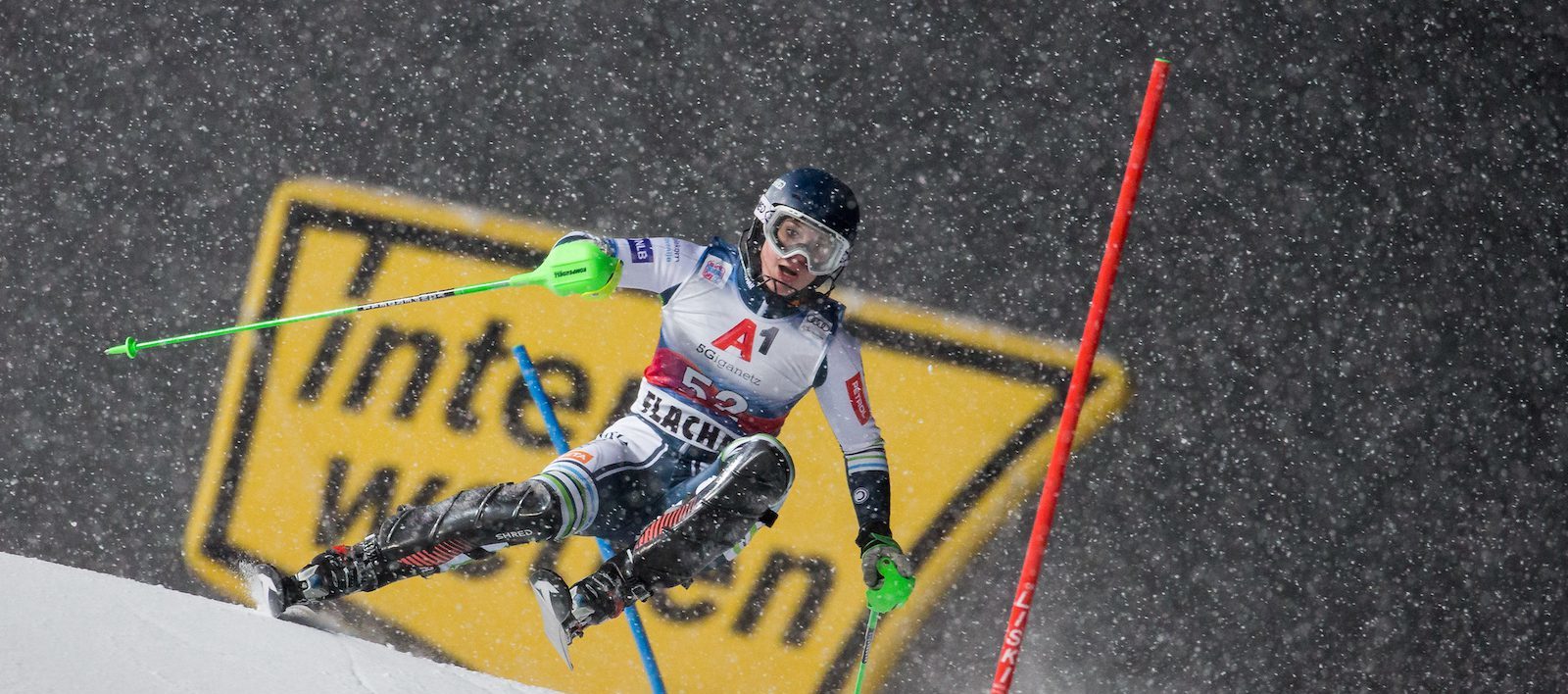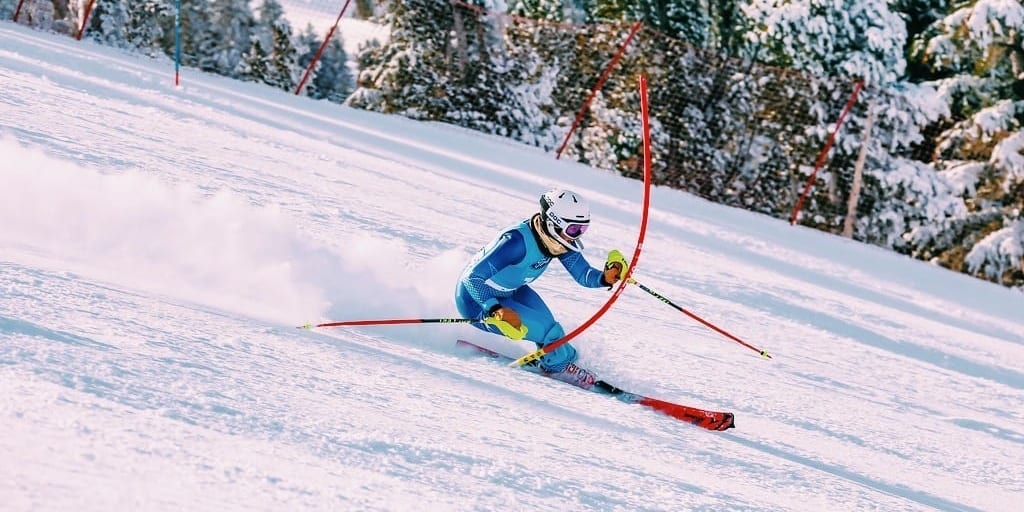Stirring the Pot With New USSA Equipment Rules
This past May at the USSA Congress in Park City, Utah, coaches and officials from across the country converged to discuss various rule changes for the coming season. One major change was amending the USSA equipment matrix to be more in line with new FIS equipment regulations for U19 and older athletes.
The proposal was not without controversy, however, as lively debate ensued during the committee hearings with strong opinions on all sides, hashing out the details before the new regulations were eventually approved. With the change, the minimum radiuses for USSA giant slalom are now 30 meters for men and 25 meters for women.
Since the rule change, there have been several holdouts who express valid concerns about what this means for the majority of athletes who comprise their programs. These smaller programs, like the ones that make up Dirk Gouwens’ New York State Ski Racing Association (NYSSRA), consist primarily of ski racers who are not on what would be considered an “elite pipeline” and may be particularly affected by another round of new equipment regulations.
“We fully understand that anybody that is going down the road of wanting to race in FIS races … needs to get on the road of getting on the FIS equipment, and they need to do that probably as quickly as possible,” Gouwens says. “The issue that we have is that less than 10 percent of our U19 athletes have FIS licenses. 90 percent of our athletes have no intention to ever race in a FIS race.”
Gouwens stresses that the vast majority of athletes at smaller, local programs may be forced out of USSA racing by way of having to conform to equipment rules that mirror the regulations for FIS competition. Families don’t want to buy and – perhaps more importantly – kids don’t want to ski on another pair of skis that they lack the money to purchase or strength and skill set to ski on.
“It’s a very challenging situation, but a situation (in which) we feel the best solution is to come more in line with the FIS rules so there are less exceptions and less gaps.” – Chip Knight
But according to USSA Development Director Chip Knight, these changes are not meant to unintentionally force any athletes out of the sport. On the contrary, it is the hope of Knight and his staff at USSA that a more streamlined system will ultimately account for a more vibrant local racing scene down the road.
“Our perspective as USSA staff has been that we think it’s important that people agree to a set of rules and work on a progression toward those standards,” Knight says. “It’s a very challenging situation, but a situation (in which) we feel the best solution is to come more in line with the FIS rules so there are less exceptions and less gaps.”
The “gaps” that Knight refers to are circumstances that ultimately do more harm than good for the sport when considered from a developmental perspective. With the old rules, due to the large variances in equipment between USSA and FIS, course setting could easily become unnecessarily complicated for coaches, officials, and athletes alike at USSA races.
Joe Paul of Minnesota’s Team Gilboa shares Gouwen’s concerns, but he also sees how the new changes can help ease the unnecessary confusion the old rules could create.
“The reasons for doing (the change) were good reasons,” says Paul. “It plays out in course sets. It does become a challenge when you’re setting a course if you’re setting it for a 20-meter variance in ski radiuses.”

Paul and Knight both agree that the old rules created some difficult course setting situations. USSA
According to Knight, these issues first started to rear their heads with the implementation of the 35-meter FIS GS ski for men back in 2013. USSA and FIS equipment regulations had to have a lot of variance to begin with simply to account for a lack of sufficient 35-meter product available to mandate everyone using it. Now that the FIS will be transitioning to a 30-meter men’s GS ski for 2017, Knight says the timing was right for a change at the USSA level as well.
This past January, a task force was commissioned to explore future equipment recommendations. The group returned to USSA with its findings and a proposal was eventually formed into the equipment matrix that was approved at Congress in May.
“When we first started talking, the idea for the guys was 25 meters in the initial proposal and then it got amended to 30,” explains Knight. “The real driving force for that was part of this whole idea we are working on to make USSA racing – to make local racing – more vibrant and more a piece of the overall ski racing picture. “In many parts of the country USSA racing has become a marginalized circuit, just one-off events that happen once in a while and are not well attended by even average FIS athletes.”
Getting current FIS athletes back racing at USSA events on a regular basis was a driving force behind the change. It is Knight’s hope that having a system that encourages FIS athletes to ski down to the USSA level will in turn encourage USSA athletes to challenge themselves at a FIS race or a newcomer to the sport to try out USSA racing if they can see a clear path of upward mobility.
“We all want our sport to be healthy and vibrant and have participation and numbers and have athletes be able to move,” Knight says. “To do that, we have to create appropriate levels of competition where athletes can move back and forth so they can gain a little confidence and then go test themselves and see what they have learned.”
“I think we will, in the Midwest, see a drop at the U19 level this year in GS participation.” – Joe Paul
Despite the explanation from USSA, coaches like Paul in the Midwest still see issues arising in their regions of the country when it comes to changing the GS ski regulations. Programs in more vertically challenged states where quality GS training is few and far between might still see GS participation numbers dwindle no matter what is done.
“I think we will, in the Midwest, see a drop at the U19 level this year in GS participation,” Paul explains. “We don’t like using this as a crutch or an excuse, but sometimes our GS courses are under 30 seconds on typically flat hills, so GS already sometimes isn’t a whole lot of fun. It’s very likely that if you don’t race FIS GS, you might race little to no GS at all, and that won’t be new this year. Over the years, we’ve seen this result because of the ski change and the age change, but this (latest change) for sure won’t help that.”
In addition, Gouwens and Paul come from parts of the country where significant numbers of Canadian athletes cross over the border to train and race with American clubs. Gouwens sees how the Canadian equipment regulations rely more on length and less on radius to determine if equipment is legal and sees how USSA could follow suit.
“The Canadian rule is way basic … they don’t care what the meter radius is on the ski, they just give you minimum lengths that you have to be above,” Gouwens adds. “If they can do it, why can’t we do it? What they do is empower the divisions to decide which races should have the longer radius skis and which ones are more entry level and can use the shorter radius skis. We’ve just mandated across the country that this is what everybody has to use and you have no choice.”
Knight acknowledges that the GS radius change might be a little hard for some athletes and families to swallow at first; but he stresses the fact that when looked at in the long term, it is his hope that these changes will ultimately be a positive step in terms of development for athletes at all ability levels.
“Is it necessarily un-fun to be on a 30 meter ski? I disagree,” he adds. “Is it a little harder? Yeah. But can we re-frame this in terms of what’s better for our kids developmentally and for our sport? I think that’s where the opportunity is and where a lot of the conversation has been misguided and focused on the immediate athlete feeling the crunch and not what our system will look like three and five years down the road.”
In the upcoming season, local programs, USSA-only track athletes, and smaller hills will feel that crunch, particularly in GS, with the hope that this equipment change will simplify development in the future.
Share your opinions below on how this radius change affects you, your family, or your program.





















